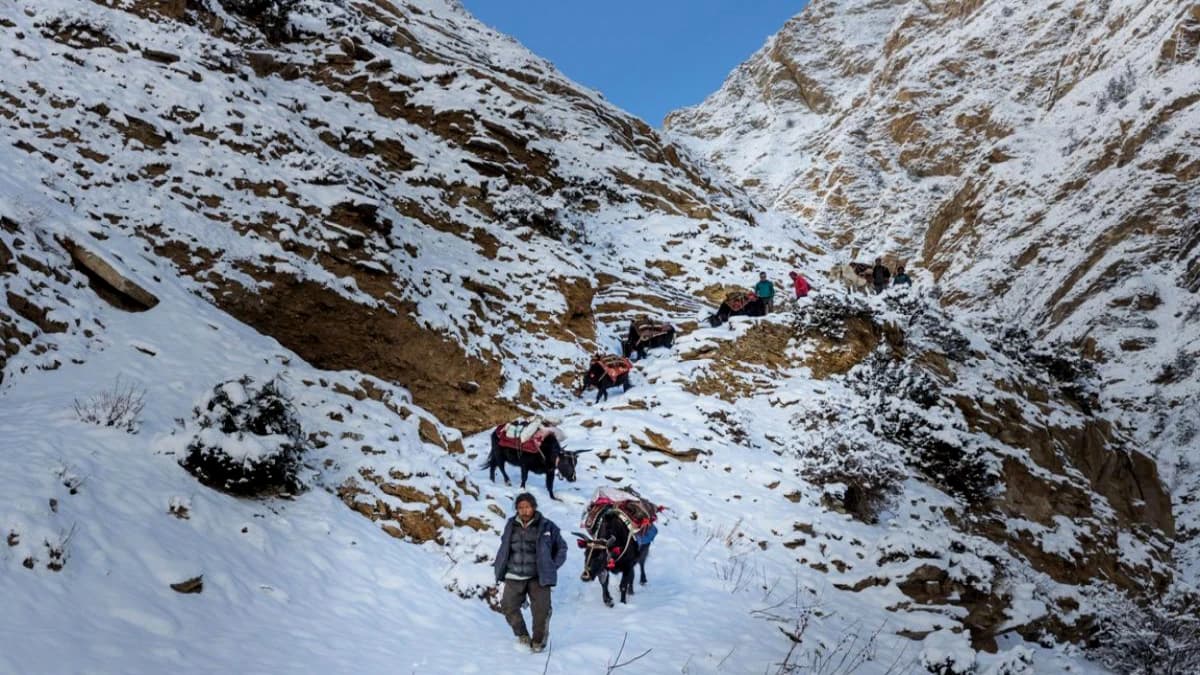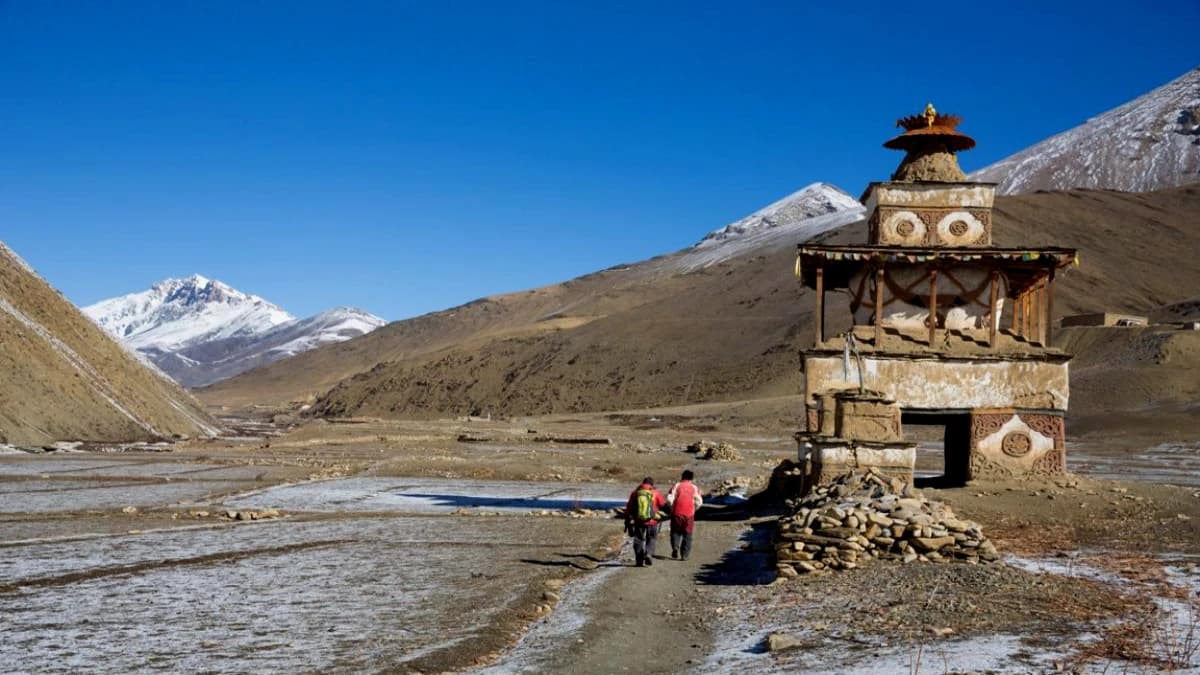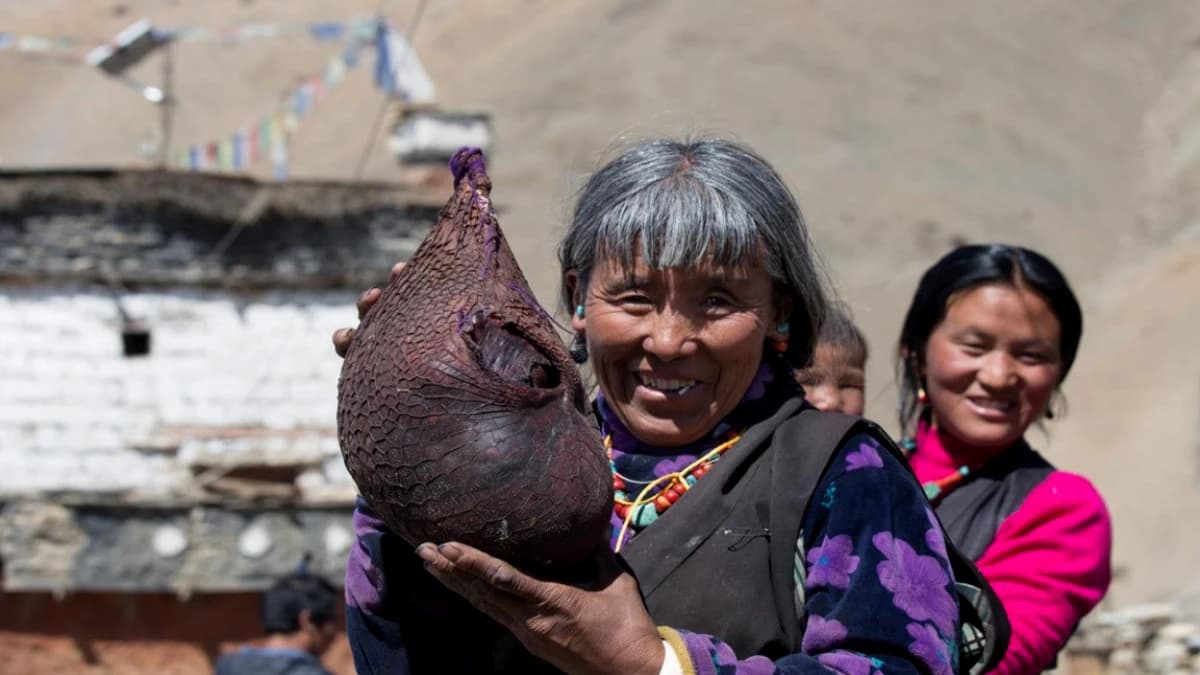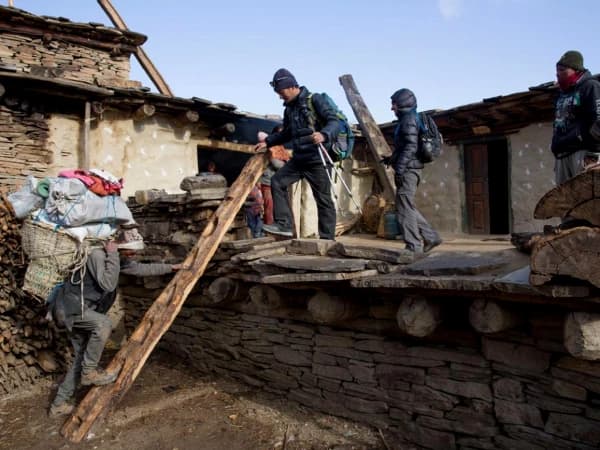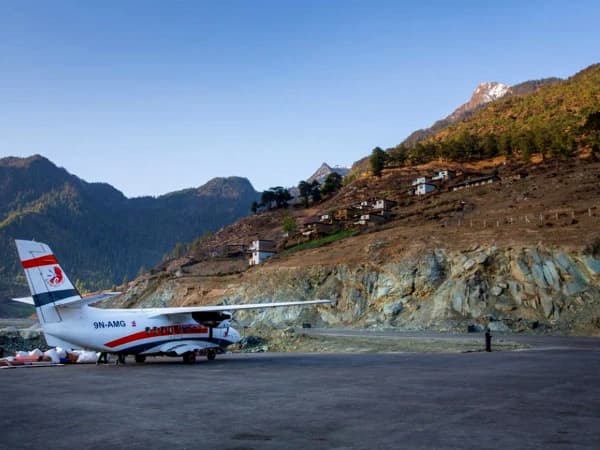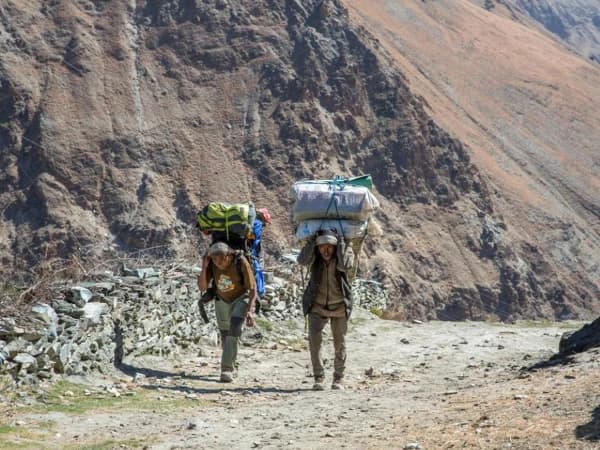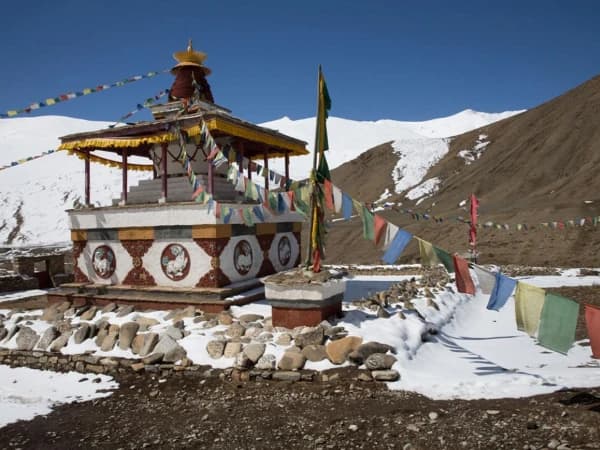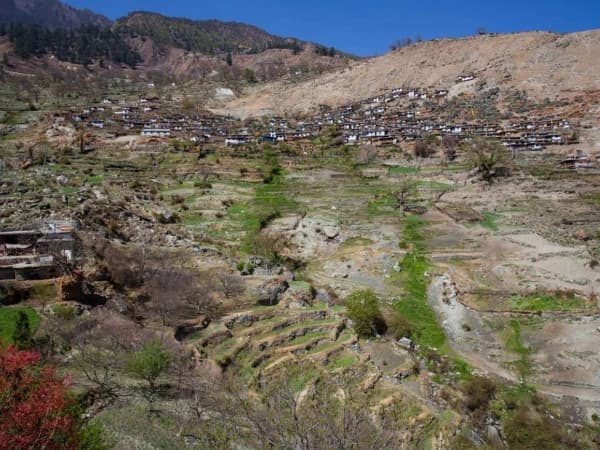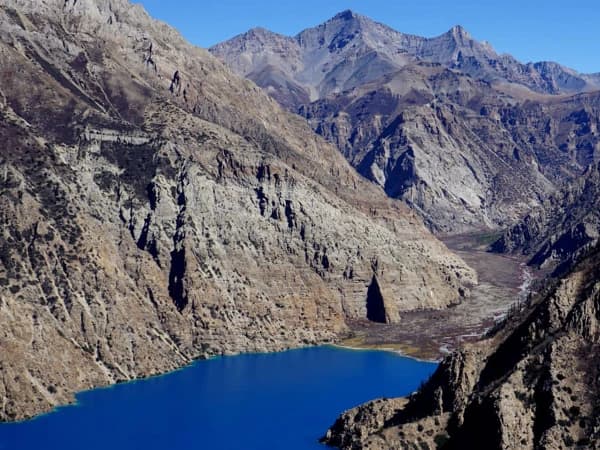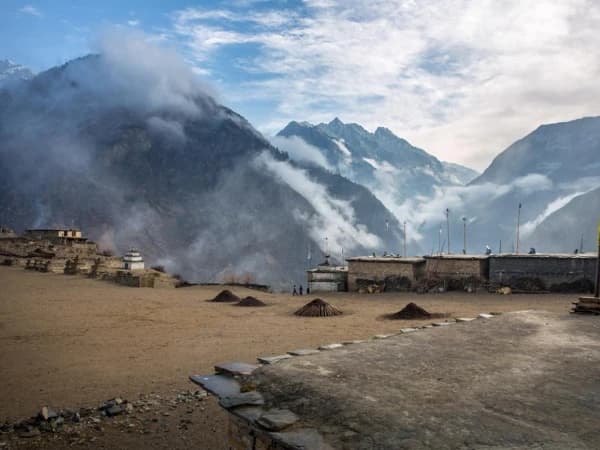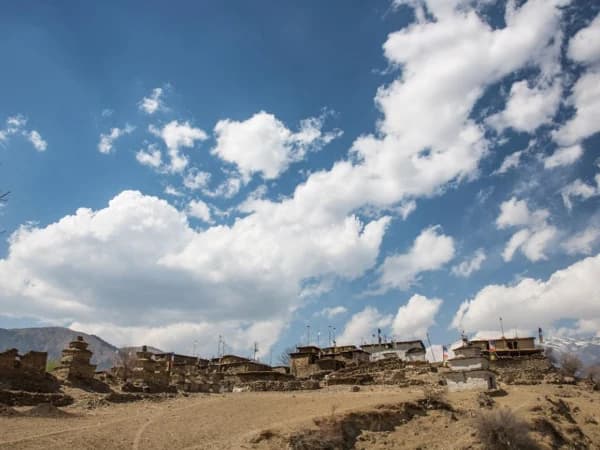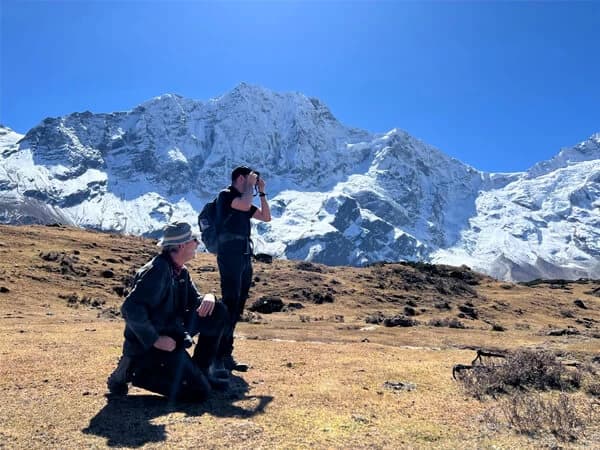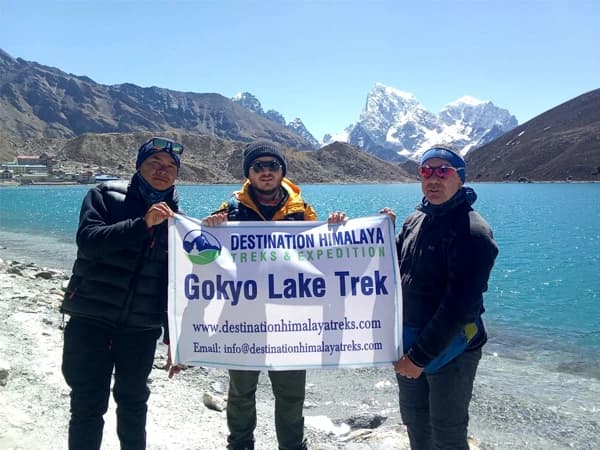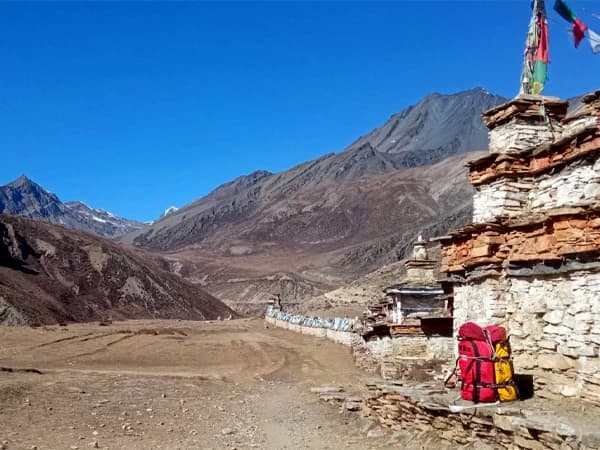Trip Introduction
Up there in the Himalayas, there is an isolated area that cannot either found in most of the maps but tends to be home to towering mountains, varied landscapes, rare wildlife and Bon Po communities dating back to 18,000 years ago- a group of indegnious people that are so preserved that they are highly known as the "A Tribe Gem Hidden In the Himalayas".
It is said that art can never be expressed; it is only meant to be felt. This is the Lower Dolpo Trek in Nepal that takes you on a mirthful walk in the Tibetan plateau of the Far Western Part of Nepal, bordered by massive high Himalayan valleys and the Dhaulagiri range. Here, every village, blooming flowers, lovely green hills, ancient monasteries, yaks herding, monks chanting and the hamlets of locals declared in an ancient style resembles the museum transporting us to the 90's era
Detailed Overview
Bordered by the Trans-Himalayan Landscape, this Lower Dolpo Trek falls under the most isolated and remote areas, exploring the most rugged terrains and diverse topography of the restricted part of Nepal. This trek to Lower Dolpo meanders through the Shey Phoksundo National Park right from the beginning and ascends to the holy wetland of Phoksundo Lake (3611 meters) by crossing two high passes of Baga La (5170 m.) and Numa La (5310 m.) through the off-beaten trails all the way covering 150 km distance in total with a pace of 6-7 hours of daily walking. So, adventure seekers, are you ready to push your limits and mark your footprint at this hidden gem?
Dolpo remained hidden and out of bounds from the world. The real game changer for it began when the movie "Caravan," also known as "Himalayan" by Eric Valli, this movie particularly focuses on the remoteness, challenges, isolated beauty, hardships and traditions of Bon community. Since then, many wanderers have dreamt of taking a glance at and meandering through this disguised beauty, but only few have attained it to date. Special permits are required to get access to this restricted area of the Dolpo region. Even though this Lower Dolpo Trekking doesn't cover the Upper Dolpo fully, it does touch some of its vital sections, letting us immerse in the "Ba yul- The Hidden Land of the Himalayas, YES! another symbolic name of lower dolpo.
Our 18-day Lower Dolpo Trek itinerary begins with a small aircraft flight from Kathmandu to Nepalgunj and Juphal, and the walking trails start from Dunai, entering the official Dolpo district and navigating along the Thulo Bheri River. The glimpse of the massifs of the world's seventh and eighth highest peak- Mt. Annapurna (8091 m) and Dhaulagiri (8167 m) befriends us throughout the journey from this beginning point. On the following days, it navigates through several hamlets of Tarakot, Laini, Nawarpani, and Dho Tarap, Numa La Base Camp, before crossing the first high pass of Numa La.
Upon attaining at Dho Tarap, the first acclimatization day is set here where we'll pay visit to ancient monasteries such as Dramkar Dewa Monastery, Dhoro Goma, Ribo Bompa Monastery (the most notable and famous gompa), and Mekhyim Monastery surrounded by red shrines, chortens, mani walls and also get to have one and one conversation with the locals here wearing the traditional attired, with the hand made jewelery out of musk deer teeth.
This Dolpo Trek continues by traversing other half sections of upper sections via Pelung Tang, Baga La Pass, Ringmo, and finally ascends to the sacred Shey Phoksundo Lake and goes all the way downhill to Shyanta village. After taking a flight back to Kathmandu, our camping trek ends, retracing the breathtaking aircraft and recalling every single moment spent at this hidden treasure of the Himalayas.
If you are someone who loves to explore the best of the Himalayas and has the daring heart to cross two high passes with a crisp feeling of wilderness while exploring the pristine Himalayan flora and fauna, then this carefully crafted Lower Dolpo Trek package is perfect for you.
Highlights of Lower Dolpo Trekking
- Cross 2 major high passes of Baga La Pass (5170 m) and Numa La Pass (5310 m)
- Explore the wilderness of the Shey Phoksundo National Park, where the untamed beauty of flora and fauna accompany you
- Visit several monasteries, red shrines, gompas, mani walls, and prayer wheels residing here since 500 years
- Witness the pristine holy Phoskundo Lake- 3611 m, known as Nepal's deepest lake
- Experience the thrill of the off-beaten adventure in the far western isolated region
- Get a lively experience of the Bon Buddhism community and their rich hospitality where the smiley faces of Tibetan kids amaze you
- Surround yourself with the towering mountains of Kanjiroba Himal, Dhaulagiri, and the Annapurna Range in every step
- Catch a glimpse of Yak Carvan with yaks and himalayan blue sheep grazing in the cultivated farms
What makes this Lower Dolpo Trek special?
There's no doubt how this trek to Lower Dolpo tends to win every enthusiastic hikers heart, after all it falls under the Dolpo region that takes you to the most isolated and remote areas of Far western side of Nepal.
From lovely green hills that seem like a 90's era Switzerland, to dry landscape that reflects like a movie straight from DUNE, from highly towering mountains to wetland of the Shey Phoksundo Lake, and you know what the most heartwarming part would be the smiley faces of children and the warm hospitality of Tibetans that tends to leave a mark to every visitors.
While we might perceive this is it, there are many things to explore that make this trek to Dolpo truly special and noteworthy for 2025 and 2026:
Camping Trek and Tea House Experiences: Explore the wilderness and authenticity of Lower Dolpo
"Lower Dolpo" genuinely stands out, being any zero influence of modernization that means we'll get to reside at the tea house and camping tent offering the wilderness, remoteness, and authenticity of local traditions more in depth. WELL! Just imagine setting a tent near the lake, forested area, grassy hill, highly towering landscape with a chirping sound of birds and also the soothing sound of roaring rivers, that's camping trek in lower dolpo for you!
Sipping a cup of tea by the tents, the thundering mountains and varied landscapes that change every single day just show us something unique, remote and obviously, the essence of wilderness of how true treks are supposed to be. But that's not the end; passing by several local hamlets (villages), and settling there at some section just near the cattle farms, with the fragrance of charming villages, with yaks and blue sheeps grazing in the terraced fields and not to forget! The local delicacies prepared by locals and our guide chef reward us with something unique that has no match even at 5-star dining restaurants and luxury amenities.
Exploring the Untamed Wilderness of Shey Phoksundo National Park: Nature Enchanment
Shey Phoksundo National Park, Nepal's largest national park, spans 3555 square meters and touches the two major districts of Dolpa and Mugu, showing us the roller coaster ride of Himalayan flora and fauna. Established in 1984 to preserve the Trans-Himalayan Territory, the nature ecosystem and biodiversity are still in their pristine condition. It ranges in elevation from 2130 m/6995 ft to over 6880 m/22570, covering the wide settlements of locals, forested terrains, and diverse terrains solely surrounded by Dhaulagiri and Kanjiroba Himal, so one can imagine how the breathtaking views of nature unfold each day, making us curious about what is next to be discovered each day during Lower Dolpo Trekking.
This conservation area serves as a home to more than 200 mammal and 210 bird species and six reptiles, with many notable rare species. This trek to Dolpo begins with a descent through the hills blooming with rhododendrons, pines, oaks, and even wildflowers such as blue pine and hemlock and also lets us catch a glimpse of langur monkeys playing back and forth, himalyan tahr hiding behind the trees and the Himalayan monal (Danfe) showing it's beauty. The most fascinating part would be the insights into yak herding, sheep flocks, and Himalayan mules.
While walking on the upper trail, we might even mingle with musk deer and elusive red panda, and also, if we are lucky enough, we might encounter a snow leopard glancing at us from far distant, as 90 snow leopards were found just in 2025 few months back making our trekking experience an enchanting journey to forever remember for.
Phoksundo Lake- A sacred wetland amid the Himalayas
Do you know that up in the lower Dolpo region in Nepal, at an altitude of 3611 meters, there resides the holy Phoksundo Lake, renowned as the deepest freshwater lake in Nepal, being 145 meters of depth? YES! You heard it right, located at the remote Shey Phoksundo National Park, its color changes depending on the time and weather conditions, while we reach up there, either we witness the untamed emrald alike green shade Shey Phoksundo Lake or turquoise blue lake depending on what luck favors us.
Besides, Phoksundo Lake is considered a holy wetland and a deity by the Tibetans, especially by the communities of Ringmo village, Shey Gompa, and Dho Tarap, and by the BonPo people, who are highly influenced by Tibetan Buddhism. Many visitors come just to take a dip at hoy water as it is highly believed that, "Taking a dip here washes all your sins and gives good fortune and prosperity in life". The lake of Phoksundo is dotted by almost 20 ancient monasteries, so it has a deep connection with the hearts of locals, rewarding this lake as a god that protects their well-being and villages.
With the deep spiritual belief, with the reflection of mountains and landscapes on the sparkling lake, this basin stands to be one of the major highlights of Lower Dolpo Trekking.
Cultural Treasures of Bon Buddhism: Explore Shey Gompa, Dho Tarap, and Ringmo
While many of us might think that the breathtaking views of mountains, landscapes, and mountain stands out being the main exploration of this trek to Dolpo, but the several charming villages such as Dho Tarap, Ringmo, with rich cultures of bon po buddhism and Buddist Tibetans that was founded 18000 years ago by Zang Zung Empire stands out being the remarkable aspect our Dolpo Trek. Being unbothered by the modern influences, these communities still hold their cultures and traditions just like the 90's era. You'd be surprised to know that their livelihood simply runs by the animal husbandry process, farming, and cultivations fully depending on nature to sustain their lives.
Shey Gompa, also known as the heart of Dolpo, is considered the oldest and largest bon monastery of the Dolpo region, dating back to the 11th century. It has several attributes signifying its rich heritage. The whitewashed walls, thangka paintings, mandalas, prayer halls, and the sculptures of religious leaders Avalokiteshvara and Padmasambhava spiritually reflect the unchanged Buddhist devotion.
Taking a glance here where the monks are meditating with the jingling bells of yaks and the praying flags fluttering in the high winds surely transports us to an ancient era. The famous "Crystal Mountain" also sits here, known as the Kailash of Dolpo, is considered as God, where many kora rituals are performed every year performing dance rituals, playing instruments and singing folk songs. These insights and high beliefs of Bon communities provide us something unique and indescribable, connecting us more with the lower Dolpo of Nepal.
Why choose Destination Himalaya Treks and Expedition?
With our experience of serving more than 15+ enthusiastic wanderers like you across the globe, we hold great expertise on 3 major keys: "Safety, Transparency, and Success". Our trekking guides and other supporting crews are highly experienced and have at least provided assistance to 1000+ trekkers to the many remote areas of Nepal like Manaslu Circuit Trek, Nar Phu Valley, and Upper Mustang Trek, which is as remote as this lower dolpo of Nepal.
Besides, we are also fond of and well-versed in how transparency works and how mutual understanding plays a vital role in making every trip a hassle-free journey. We never charge anything extra cost saying personal expenses, whatever you see, you get it. There are no such things as hidden charges at our Lower Dolpo Cost; in fact, we always add extra benefits to wanderes like you.
Our packages are all budget-friendly and crafted by the pro expert guides. If our Lower Dolpo Trek itinerary doesn't suit your estimated budget and timeframe, then you can customize it anytime with the help of our DHT Team. For further queries, you can mail us anytime at info(a)destinationhimalayatreks.com or call us, Whats App or Viber us at +977 9851016814 anytime 24/7.
Lower Dolpo Trek Cost for 2025 and 2026
The Lower Dolpo Trek cost varies from USD 1765 to USD 1990 depending on the number of days of pax the group holds. Our 18-day Lower Dolpo Trek package covers all your camping tents, accommodations, permits, meals, airfare, and other transportation facilities with the experience of a top-notch guide with 6+ supporting crew members. It cannot be minimized lesser than this; in fact, it is the best price and crafted according to keeping the budget in mind.
The following are the details of the pricing depending on the number. of pax of the group with the booking link:
| No. of Pax | Price | Booking Link |
| 2-3 | USD 1990 | Book here |
| 4-6 | USD 1925 | Book here |
| 7-9 | USD 1875 | Book here |
| Over 10 | USD 1765 | Book here |
